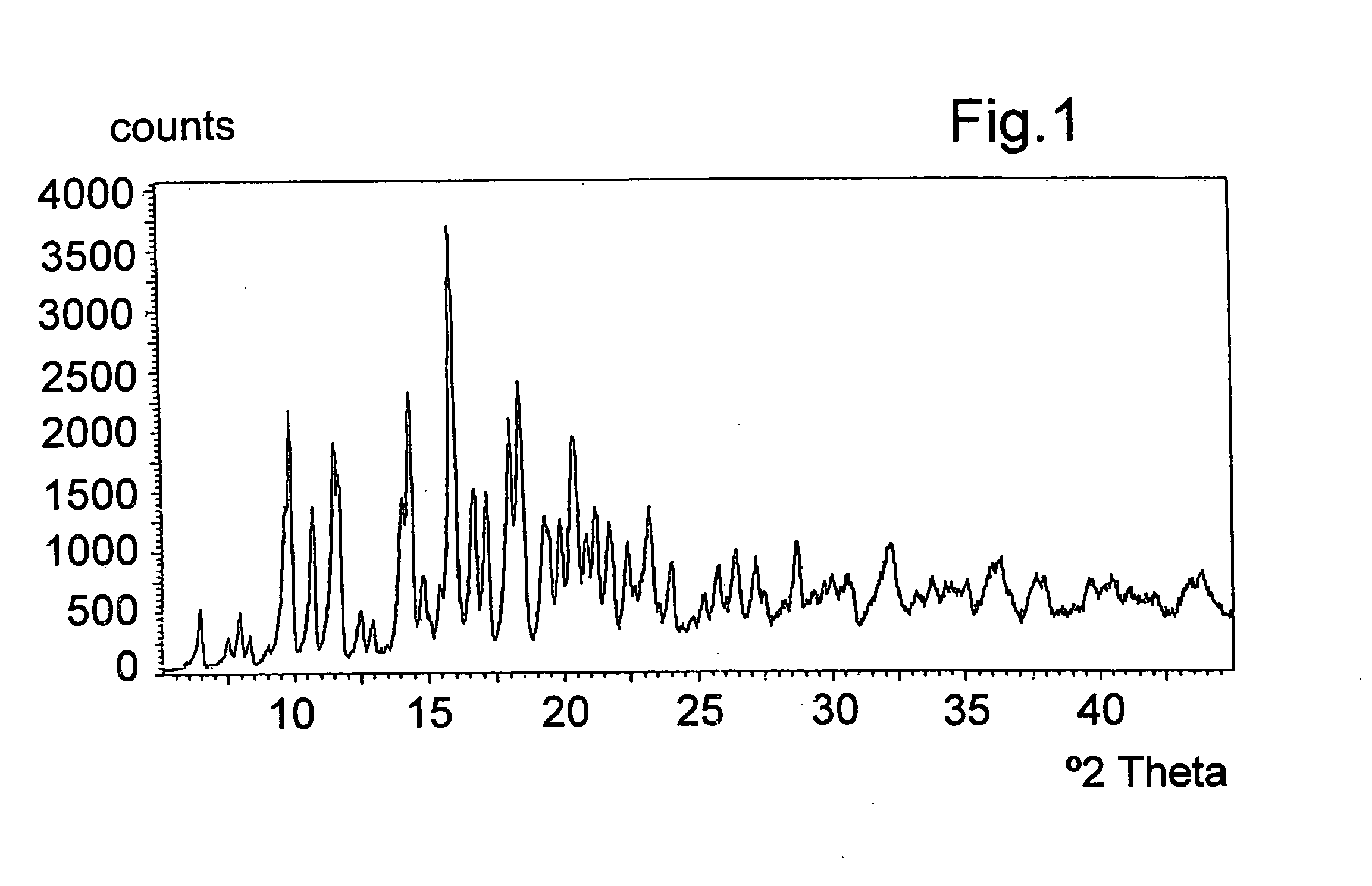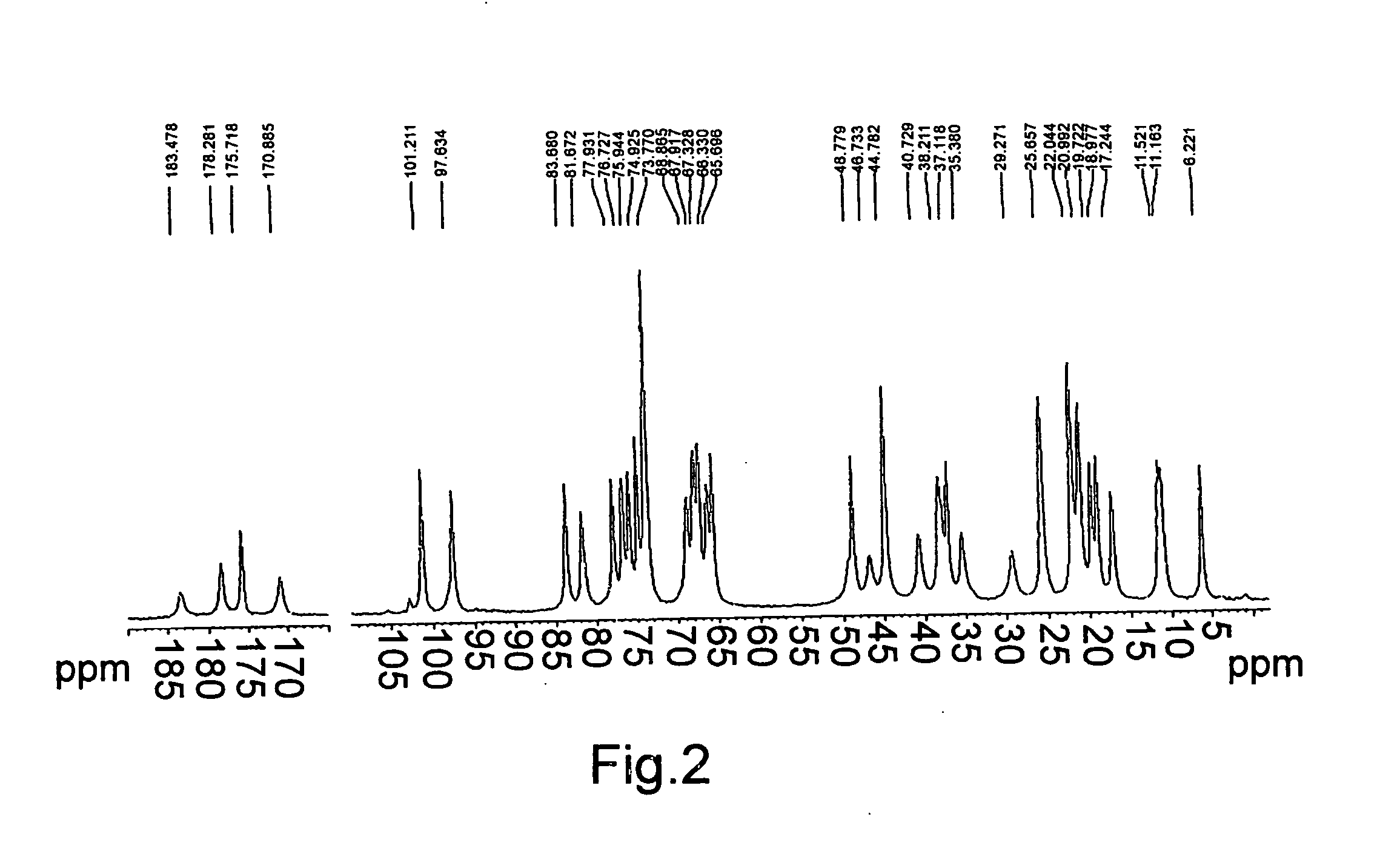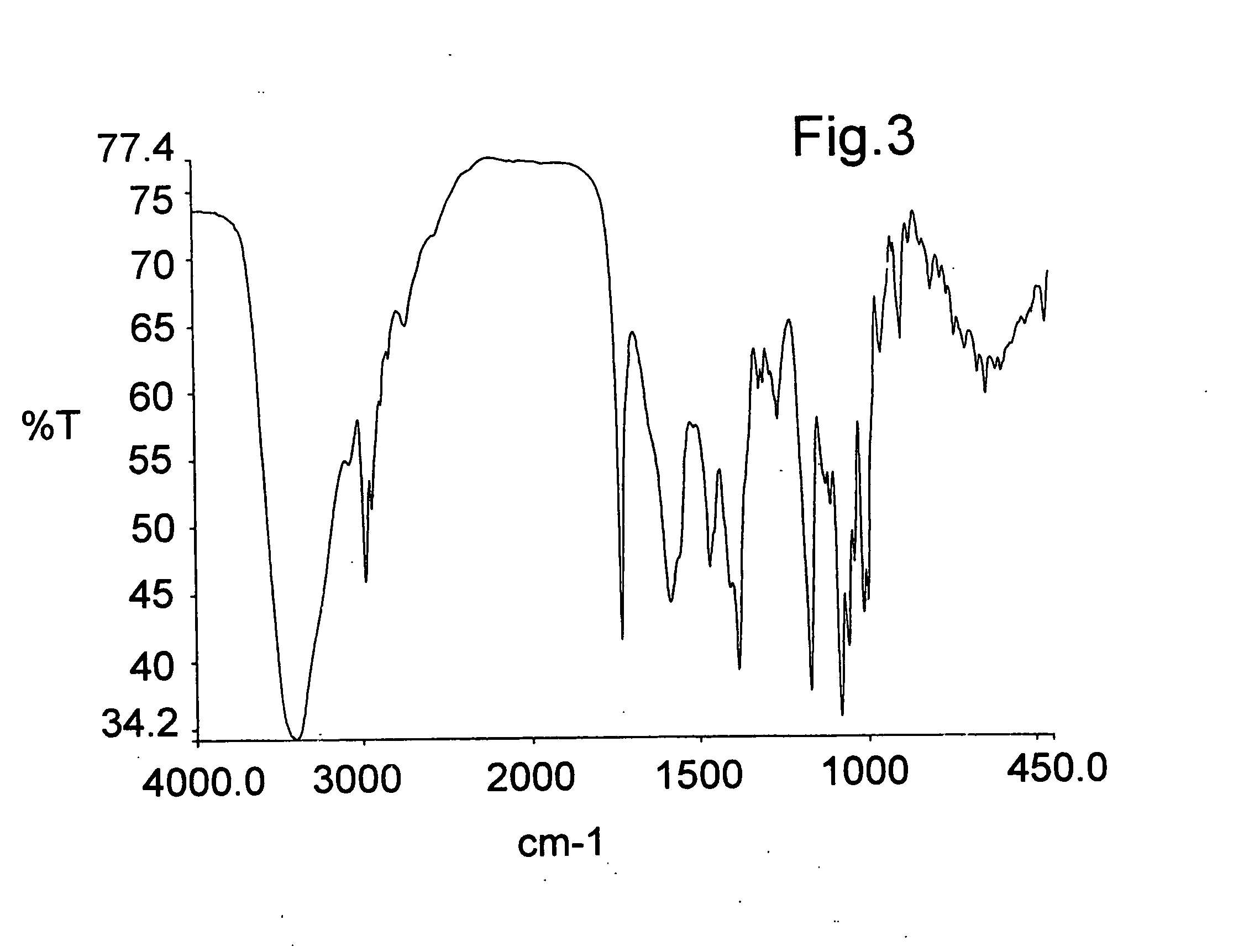Addition salts of azithromycin and citric acid and process for preparing them
- Summary
- Abstract
- Description
- Claims
- Application Information
AI Technical Summary
Benefits of technology
Problems solved by technology
Method used
Image
Examples
example 1
Preparation of Azithromycin Hydrogen Citrate
[0055] 20 g of azithromycin are added to 100 ml of acetone (water content according to Karl-Fisher of 1 to 5%), the mixture is stirred at ambient temperature until dissolved. 5.35 g of citric acid are added and the mixture is heated at reflux. It is then cooled to 0-5° C., filtered, washed with acetone and dried under vacuum at 40° C. to yield 22.4 g of azithromycin hydrogen citrate (water content according to Karl-Fisher of 1.2% and acetone content less than 0.5%). The azithromycin content determined by HPLC is 80% and the citric acid content by electrometric titration is 20%, corresponding to the stoichiometric ratio of the azithromycin hydrogen citrate. The salt can contain up to 8% water depending on the drying method (by vacuum, fluidised bed, static), but is preferably 6%, under relative humidity conditions of 40%. FIGS. 1, 2 and 3 show the X-ray diffraction spectrum, the carbon 13 nuclear magnetic resonance spectrum (13C-NMR) in so...
example 2
Preparation of Azithromycin Hydrogen Citrate
[0056] 20 g of azithromycin dihydrate and 3.5 g of citric acid monohydrate are added to 50 ml of methyl acetate. This is heated at reflux, cooled to ambient temperature, filtered, washed with methyl acetate and dried under vacuum at 40° C. FIGS. 4, 5, and 6 show the X-ray diffraction spectrum, the carbon 13 nuclear magnetic resonance spectrum (13C-NMR) in solid state and the IR spectrum, recorded on KBr tablet, respectively.
example 3
Preparation of Azithromycin Hydrogen Citrate
[0057] Following the procedure set out in example 2 and replacing the methyl acetate by tetrahydrofuran, azithromycin hydrogen citrate is obtained. FIGS. 7, 8 and 9 show the X-ray diffraction spectrum, the carbon 13 10 nuclear magnetic resonance spectrum (13C-NMR) in solid state and the IR spectrum, recorded on KBr tablet, respectively.
PUM
| Property | Measurement | Unit |
|---|---|---|
| Temperature | aaaaa | aaaaa |
| Temperature | aaaaa | aaaaa |
| Fraction | aaaaa | aaaaa |
Abstract
Description
Claims
Application Information
 Login to View More
Login to View More - R&D
- Intellectual Property
- Life Sciences
- Materials
- Tech Scout
- Unparalleled Data Quality
- Higher Quality Content
- 60% Fewer Hallucinations
Browse by: Latest US Patents, China's latest patents, Technical Efficacy Thesaurus, Application Domain, Technology Topic, Popular Technical Reports.
© 2025 PatSnap. All rights reserved.Legal|Privacy policy|Modern Slavery Act Transparency Statement|Sitemap|About US| Contact US: help@patsnap.com



